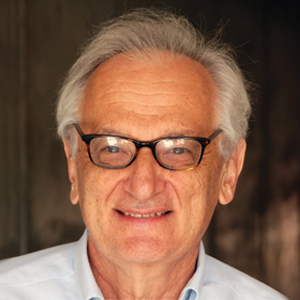Daniel E. Atkinson (1921 – 2024)
Daniel Edward Atkinson, professor emeritus of chemistry and biochemistry at UCLA, and a major figure in 20th century biochemistry, died at the age of 102 on Feb. 2, 2024, in Medford, Oregon. He is known internationally for two major contributions to metabolic biochemistry: the concept of “energy charge” and the understanding of the physiological role of the urea cycle.
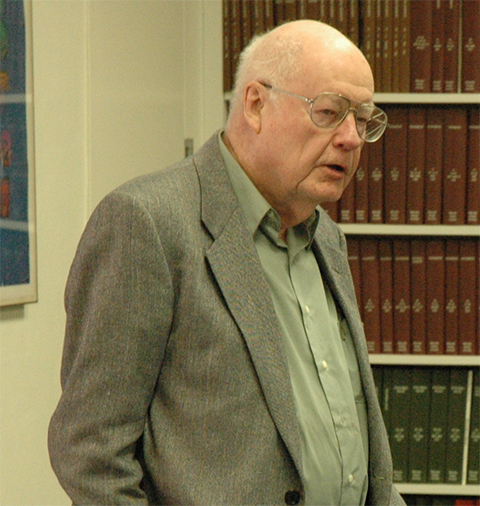
In 1952, Atkinson began his independent career as an assistant professor at UCLA. He rose through the ranks, retiring as a full professor in 1991, but kept active at UCLA until moving to Oregon in 2011. His laboratory trained more than 30 Ph.D. students and more than 20 postdoctoral fellows and visiting faculty, publishing 80 papers including 20 in the Journal of Biological Chemistry.
Atkinson's research pioneered the field of metabolic regulation. This work allowed for the development of the concept of energy charge, now a main topic of biochemistry textbooks and a fundamental bridgehead for researchers. He was also responsible for our present understanding of the biological role of the urea cycle in pH regulation. UCLA biochemistry majors are still delighted to hear how his findings, initially challenged by the old guard, made their way into mainstream biochemistry.
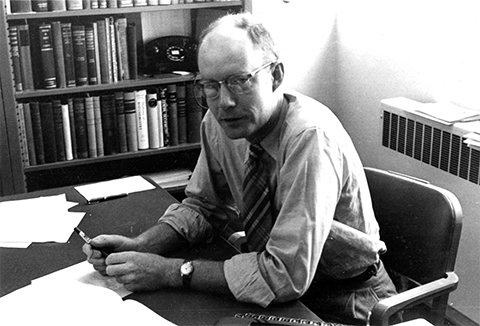
His classic 1977 monograph published by Academic Press, "Cellular Energy Metabolism and its Regulation," presented a global view of the logic of metabolism and is still widely read and acclaimed.
Energy charge
Atkinson’s studies on enzymes of the central metabolic pathway led to our understanding of the control of anabolic and catabolic reactions by the ratios of cellular adenosine mono-, di- and triphosphate, known as AMP, ADP and ATP. ATP is the near universal chemical energy source that drives metabolism, transport and movement.
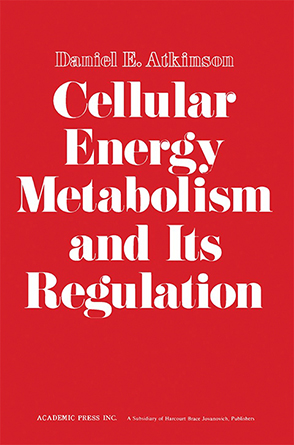
In Atkinson’s concept of energy charge, the fraction of the total adenylate pool as ATP equivalents (ATP plus half the amount of ADP) / (sum of ATP, ADP and AMP) represents the energy storage balance of the cell — values near 0.9 indicate a high energy balance and values below 0.5 indicate that cells are lacking energy resources. Atkinson discovered that key regulatory enzymes possessed allosteric binding sites for AMP, ADP and ATP that enabled them to respond appropriately to cellular energy charge.
Grahame Hardie, a professor at Dundee University and discoverer of the AMP-activated protein kinase, or AMPK, believes Atkinson’s energy charge hypothesis is a fundamental concept of the field.
“In the 1990s I was trying to understand the physiological role of AMPK, a protein kinase we had defined that was activated by AMP and inhibited by high ATP,” Hardie wrote. “I was toying with the idea that it was a kind of energy sensor that might control the balance between catabolism and anabolism, but others were sceptical (one well-known metabolic biochemist even told me that AMPK couldn’t be important, because ATP levels in cells never varied!).
“Then I read the book by Daniel Atkinson, in which he drew the analogy between AMP, ADP and ATP and the chemicals in an electrical cell or battery, and introduced the concept of energy charge. I discovered his 1964 paper on the regulation of phosphofructokinase in the Journal of Biological Chemistry where he wrote in the discussion: ‘These indications that the level of AMP, or the AMP to ATP ratio, may regulate the metabolic direction (toward energy release or toward energy storage) … suggest that AMP may function more generally as a mediator of energy metabolism. Similar effects of AMP or ADP on enzymes involved at other branch points between biosynthesis and degradation seem likely.’
“Reading this, suddenly everything clicked into place. Atkinson’s prediction from 1964 was indeed correct, the only thing he had not anticipated being that the sensing of AMP and ATP would often be done by an upstream signalling protein (AMPK), rather than by the metabolic enzymes themselves.”
Atkinson’s analogy of cellular energy charge with the charge on a battery came from his deep understanding of electricity and mechanics. His students also remember him comparing an allosteric enzyme with the automatic transmission of a car: Both need an output (gear selection for the transmission; catalytic activity for the enzyme) dependent upon integrating multiple inputs (speed, torque and accelerator position for the transmission; binding of small molecules and covalent posttranslational modifications for the enzyme). One of these students commented that Atkinson’s biochemical analogies made them understand for the first time how a battery or a transmission actually works.
Urea cycle
By 1982, Atkinson had embarked on a second major field of study: urea biosynthesis. Before Atkinson put his mind to the issue, most researchers believed the function of the urea cycle was to prevent the accumulation of ammonium ion. He noticed that the catabolism of excess amino acids to carbon dioxide, water and ammonium ion was accompanied by the release of base in the form of bicarbonate anion in almost equal molar amounts as ammonium ion.
While there was little to suggest significant toxicity from ammonium ion, the production of bicarbonate would be expected to raise the pH of the organism to levels incompatible with life. This led Atkinson to realize that the urea production neatly solves this problem by converting exactly equal amounts of ammonium ion and bicarbonate into the neutral products urea, carbon dioxide and water, all readily excreted.
Atkinson’s urea hypothesis was confirmed by a study of freshwater tilapia fish that live in lakes at pH 7.1 or related species that live in alkaline soda lakes where the pH is 9.6– 10. While fish species in lakes at neutral pH lack enzymes of the urea cycle, like almost all fish that excrete ammonium ion and bicarbonate directly into the environment, the species in the alkaline environment had a full complement of enzymes to make urea and keep their internal pH close to neutral. Other fish are able to turn on the synthesis of urea in response to alkaline environments.
ATP and metabolism
Reginald Garrett, professor emeritus at the University of Virginia and co-author with Charles Grisham of the widely used text Biochemistry, now in its seventh edition, notes that Atkinson not only created the new paradigms of energy charge and the role of the urea cycle as a mechanism for pH regulation; he also made the major contribution explicating the role of ATP in achieving thermodynamic favorability.
“Essentially any metabolic sequence, catabolic or anabolic, is rendered thermodynamically favorable by the involvement of ATP,” Garrett wrote. “Exergonic catabolic metabolism drives ATP synthesis; ATP hydrolysis then fuels the endergonic processes of anabolism. Atkinson invented the term “ATP coupling coefficient”to describe the number of ATP equivalents produced by a catabolic sequence (+) or consumed in an anabolic sequence (-).
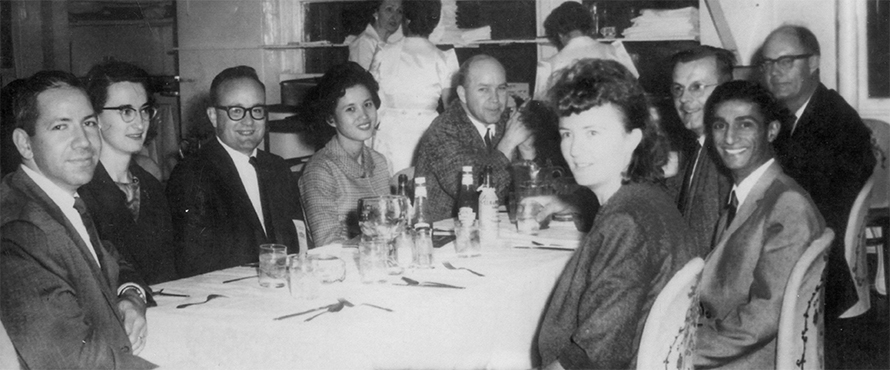
“The use of ATP equivalents to describe how thermodynamic favorability is achieved in metabolism pairs with the paradigm of energy charge, where adenine nucleotides determine the kinetic regulation of metabolism, thus uniting thermodynamics and kinetics, the two key features of any chemical reaction, under the aegis of ATP.”
Atkinson received his BSc degree in agronomy and chemistry from the University of Nebraska in 1942. He did his Ph.D. thesis work with Sidney Fox at Iowa State University. After receiving his degree in 1949, he did brief postdoctoral work at Cal Tech and the Argonne National Laboratory before joining the UCLA chemistry faculty in 1952. Francis Blacet wrote in his history of the department that Atkinson inherited the mantle of Max Dunn, the only biochemist in the department during the previous 30 years.
Atkinson was a member of the American Society for Biochemistry and Molecular Biology for 67 years, serving as a Council member from 1979 to 1982, as a member of the editorial board of the JBC from 1966 to 1971 and as a JBC associate editor from 1972 to 1977.
In 2016, the UCLA Department of Chemistry and Biochemistry established the Daniel E. Atkinson & Charles A. West Prizes in Metabolic Biochemistry to be presented to undergraduate and graduate students in their honor.
Student recollections
Dan was normally unflappable as he lectured, but one day he made a number of minor fluffs. We knew something was really bothering him. Finally, he stopped, turned and apologized to the class. He explained he had just been in a meeting with some of his colleagues in the humanities who complained that scientists just don't know how to communicate. Naturally, he objected, most eloquently I suspect.
He continued his lecture, and after another bobble we heard him mutter, "I STILL say, scientists CAN communicate!"
—Margaret Holzer (1964 UCLA Biochemistry Ph.D.), California State University, Northridge (emeritus)
During Dan’s laboratory group meetings, he would often answer questions with a preface, “Well, that is a pretty good question for a first-year chemistry student.” After about two years of doing research under his supervision, I can remember being very pleased with myself when he replied to one of my comments, “Well, that is a pretty good question for a third-year physical chemistry student.”
I think all of us working in his group appreciated both his wry sense of humor and his efforts to get us to develop our critical thinking skills.
—James Ball (1973 Ph.D. with Atkinson), University of Cincinnati College of Medicine
I joined Dan’s lab because as an undergraduate biochemistry major, I enjoyed reading his papers, especially those on energy charge, as he had a different way of thinking about biochemistry than anyone else. I felt that if I was lucky enough to be accepted into his lab, I could learn how he thinks, which would serve me well regardless of the topic.
I recall one moment with Dan that touched me deeply. During my oral qualifying exam, another professor was asking me a question about evolution of isozymes, and I faltered. Dan stepped in immediately and said, “I know Chris knows the answer to this question, he’s just not telling you, so I suggest we move on.”
Dan knew more about each of his students than the students realized. His words were few, but his impact on science and his students was immense.
—Christopher Glembotski (1979 Ph.D. with Atkinson),University of Arizona College of Medicine
I've had the good fortune of meeting some truly intelligent people in my time and was fortunate enough to take classes from two different Nobel laureates at UCLA. Both made a point to mention that Atkinson was probably the smartest, most thoughtful person they'd ever met.
When Paul Boyer said, "He reminds me of Rodin's 'The Thinker,'” Atkinson responded with "I think I've just been compared to a statue whose head is either empty or full of bronze."
I once had difficulty understanding the point of a paper I was reading and asked Atkinson what I was missing; he gave the paper a quick read and said, "You're not missing anything. This paper really is nonsense."
He looked at problems that nobody else considered and followed through on solving them, often in the face of massive skepticism. More than that, he was ridiculously nice and possessed immense integrity and patience.
—Michael Fester (1982 M.S. with Atkinson)
As I write this, I am looking at Atkinson’s "Cellular Energy Metabolism and Its Regulation" book that I bought in 1979. The cover is tattered from repeated attempts to absorb his wisdom through the years, but my highlight markings only went to Chapter 6 of eight chapters. Shameful!!
—Lillian Lou (1984 UCLA Biochemistry Ph.D.), The John C. Martin Foundation
Dan was the ultimate gentleman–scholar, a gentle giant in biochemistry and metabolic regulation. We lost a great man and mentor, and a person with the driest wit and humor.
—Bruce Morimoto (1989 Ph.D. with Atkinson), Alto Neuroscience
As a beginning graduate student of Dan Atkinson’s, I walked into his office and, in an effort to clear bench space, asked if it might be possible to remove what appeared to me to be a large wash basin from the laboratory. What followed was a one-plus hour lecture on the function and historical significance of the Warburg apparatus. A few years later, as a beginning postdoc in Earl Stadtman’s laboratory, Earl showed me the space in which I was to perform research. On the bench was a Warburg apparatus. When Earl asked if I knew what it was, I thanked Dan for what was to be a good first impression.
The day I earned my degree from Atkinson, I told him that I wished I had been born in his era with all the great discoveries. The look on his face suggested he may want to take my degree back. He described to me great technological advances to come, the extraordinary discoveries that would afford and his willingness to trade places.
—Luke I. Szweda (1990 Ph.D. with Atkinson) University of Texas Southwestern Medical Center
Enjoy reading ASBMB Today?
Become a member to receive the print edition four times a year and the digital edition monthly.
Learn moreGet the latest from ASBMB Today
Enter your email address, and we’ll send you a weekly email with recent articles, interviews and more.
Latest in People
People highlights or most popular articles
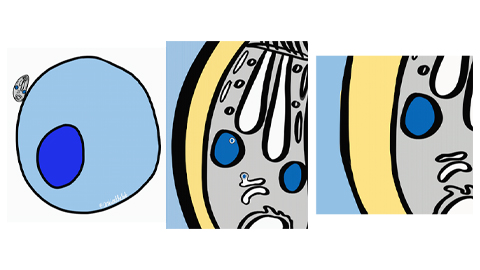
Sketching, scribbling and scicomm
Graduate student Ari Paiz describes how her love of science and art blend to make her an effective science communicator.

Embrace your neurodivergence and flourish in college
This guide offers practical advice on setting yourself up for success — learn how to leverage campus resources, work with professors and embrace your strengths.

Survival tools for a neurodivergent brain in academia
Working in academia is hard, and being neurodivergent makes it harder. Here are a few tools that may help, from a Ph.D. student with ADHD.

Quieting the static: Building inclusive STEM classrooms
Christin Monroe, an assistant professor of chemistry at Landmark College, offers practical tips to help educators make their classrooms more accessible to neurodivergent scientists.

Hidden strengths of an autistic scientist
Navigating the world of scientific research as an autistic scientist comes with unique challenges —microaggressions, communication hurdles and the constant pressure to conform to social norms, postbaccalaureate student Taylor Stolberg writes.

Richard Silverman to speak at ASBMB 2025
Richard Silverman and Melissa Moore are the featured speakers at the ASBMB annual meeting to be held April 12-15 in Chicago.


